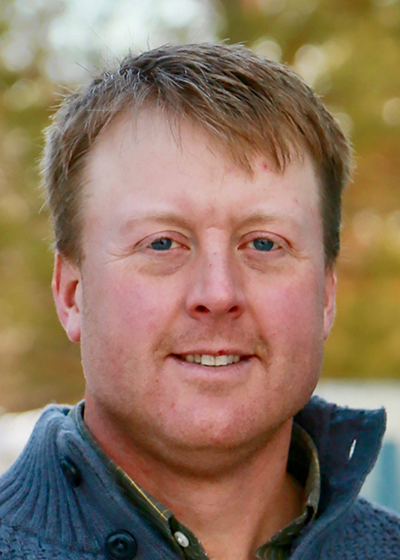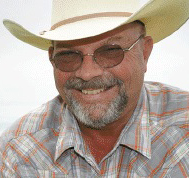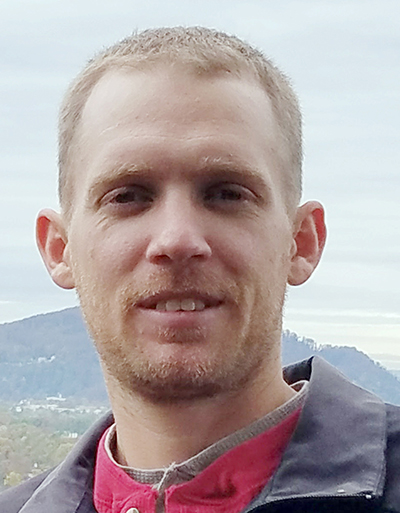Allowing soils to regenerate is the key to bottom-line success for producers, and the No-till on the Plains Winter Conference is the place to learn more.
This event will take place on Jan. 30-31, 2018, and is set to give attendees tips on how to regenerate their soils while producing high-quality, profitable grains.
Winter Conference speakers will tell how they have improved utilization of crop rotations, diverse cover crop mixes, companion cropping and livestock grazing, while being dedicated to improving soil health.
Growers know regenerative farming occurs by increasing organic matter, restoring biological communities within the soil and providing a diverse plant community to feed the soil ecosystem. These real-world examples of regenerative agriculture will come directly from Winter Conference speakers, making it an that event growers will not want to miss.
Speaker highlights include:

Derek Axten
- Derek Axten, who owns and operates a diversified grain farm in southern Saskatchewan with his family. Derek operates a no-till farm and has improved soil health by seeding intercrops, companion crops and cover crops.
Durum wheat, oats and rye are his predominant cereals, with mustard and red lentil intercrop, forage peas and mustard intercrop, flax and chickpea intercrop, and large green lentils, faba beans and fenugreek as composition crops.
He also grows 280 leased acres of alfalfa hay and contract grazes 300 head of brood cows on more than 900 acres of cover crops in the fall and winter. Increasing the farm’s plant diversity and intensity is feeding the soil biology, which in turn is regenerating the land. Improving soil health has allowed him to reduce synthetic inputs, increase water efficiency and build organic matter.

Jimmy Emmons
- Jimmy Emmons, a farmer with nearly 2,000 acres in Dewey County, Okla., who farms with a rotation of wheat, irrigated dairy alfalfa hay, wheat and canola and manages a cow-calf operation as well.
He began to use cover crops 7 years ago to improve soil health, investing in soil moisture probes to assess how much water the covers were actually using. He’s also looking at cover crops as a forage source for cattle and what might be done to heal native grass pastures.
Jimmy is also using companion crops with his sorghum as an attraction for beneficial insects to combat sugarcane aphid infestation. Jimmy is dedicated to regenerating his soils to a fully functioning ecosystem that needs fewer and fewer chemicals and thrives on the services provided by plants and animals.

Adam Chappel
- Adam Chappel, a fourth-generation farmer from Cotton Plant, Ark., farms 9,000 acres in partnership with his brother, Seth Chappell. Adam earned a B.S in botany from Arkansas State University and an M.S. in entomology from the University of Arkansas. During this time, he developed an interest in research and ecological principles that led him to question the conventional methods of farming.
Recognizing the shrinking margins in Southern row-crop agriculture, Adam looked for a way to cut costs through cultural means. This, combined with the need to control herbicide-resistant weeds such as palmer amaranth, led to experimenting with cover crops and a passion for soil health. They now have more than 8,000 acres planted to covers and utilize a no-till system.
The change from conventional tillage and traditional Southern row-crop farming to no-till and covers has allowed them to maintain top yields in the area and reduce input costs significantly.

John Heerman
- John Heerman was raised on a family farm using a full tillage-fallow system. He left the farm for a short while after high school to get his degree in agricultural economics, and that degree eventually helped him to discover soil health. The education led him down the path of reducing costs, and evaluating profitability in the operation.
Since returning to the farm, the operation has changed from a summer fallow-tillage-wheat system to a no-till system. In the last 5 years Heerman’s operation has evolved to a continuous living-root cover rotation, striving to regenerate his soils. John realized, with the help of others, that perhaps everything he needed is contained in the soil. Over the past 3 years he’s diversified the farm with multi-species cover crop cocktails, different cash crops and some livestock.
John farms in an area that receives 17 inches of annual rainfall and it’s of utmost importance for him to keep the soil covered and utilize every drop of moisture. He believes it’s imperative to understand that as farmers we’re all working with livestock, it’s just some of us only have livestock beneath our feet in the form of soil microbiology.
A full list of speakers, break-out sessions and agenda is available at http://notill.org/events/22nd-annual-winter-conference.
AIM Symposium Focuses on Innovations in Regenerative Agriculture
Following the Winter Conference, stay in Wichita for the 2018 Agriculture’s Innovative Minds (AIM) Symposium. Set for Feb. 1, AIM promises to challenge the thinking of any producer.
This year’s theme, Innovations in Regenerative Agriculture, will provide the leading edge of thoughts and practices to regenerate soils. Speakers for the day-long event include Dr. Christine Jones from Australia; Dr. Jill Clapperton from Spokane, Wash.; Derek Axten from Saskatchewan, Canada; Daniel King from Jako Farms in Hutchinson, Kan., and Keith Thompson from Osage City, Kan.
The agenda for this event will focus on concepts and practices challenging the conventionally accepted ideas in agriculture, including carbon-nitrogen relationships in soils, multi-species cropping, profitable crops and multi-species grazing.
More information about the event is available at http://notill.org/events/aim-symposium.






Post a comment
Report Abusive Comment